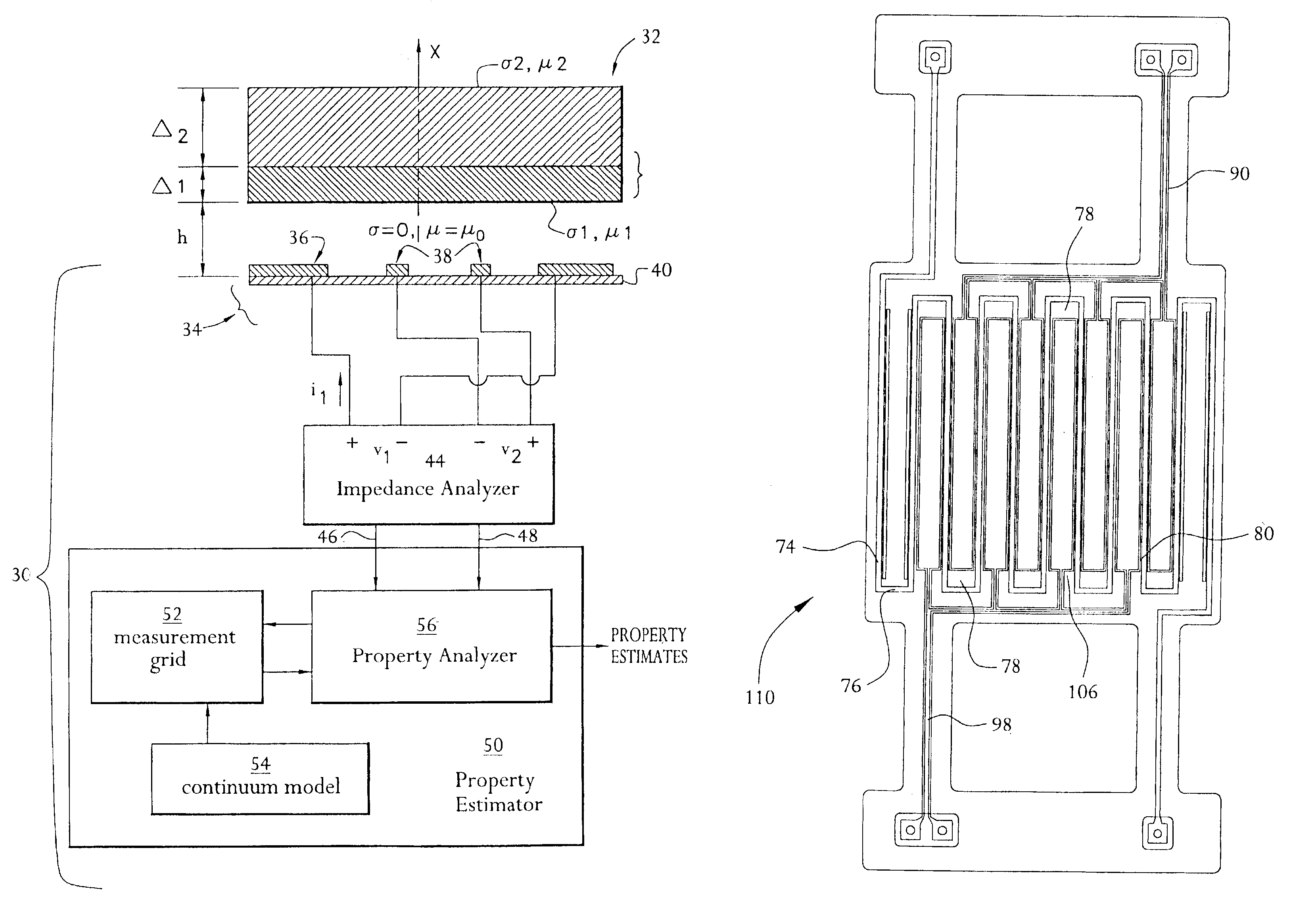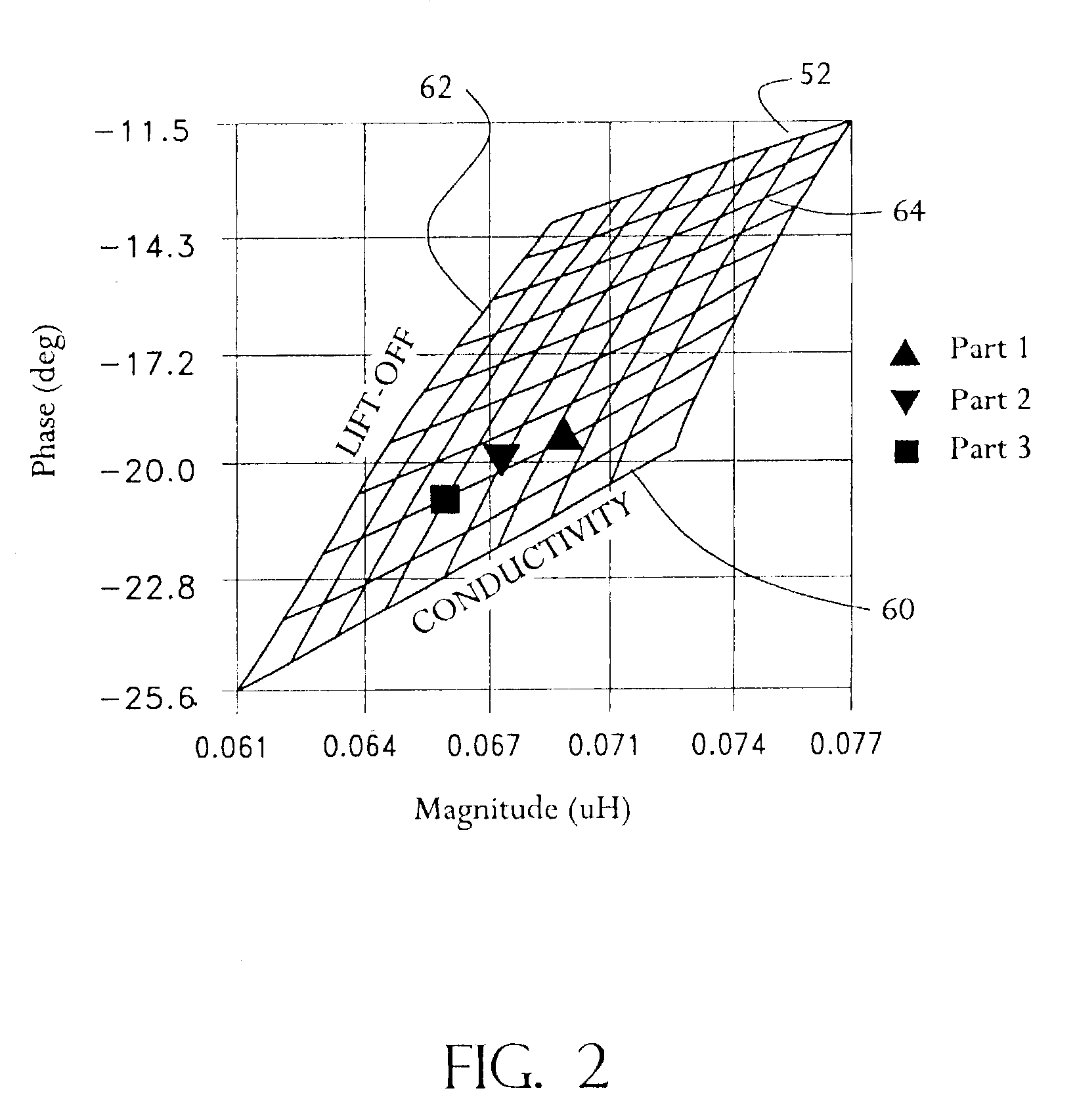Absolute property measurement with air calibration
- Summary
- Abstract
- Description
- Claims
- Application Information
AI Technical Summary
Benefits of technology
Problems solved by technology
Method used
Image
Examples
Embodiment Construction
[0056]It is a desire to measure properties of a material such as (1) porosity of thermal spray coatings, (2) fatigue in stainless steel, (3) plastic deformation in aluminum and titanium, (4) temperature, (5) surface roughness, (6) plastic deformation, (7) fatigue damage, and (8) corrosion. It has been shown that electrical conductivity of the material varies with these properties. See paper entitled, “Surface-Mounted Eddy-Current Sensors for On-Line Monitoring of Fatigue Tests and for Aircraft Health Monitoring” by Goldfine, Schlicker, and Washabaugh, presented at the Second Joint NASA / FAA / DoD Conference on Aging Aircraft in August 1998 and a paper entitled, “Conformable Eddy Current Sensors and Methods for Gas Turbine Inspection and Health Monitoring” by Goldfine, Washabaugh, Walrath, Zombo, and Miller, presented at the ASM Gas Turbines Technology Conference in October 1998, the entire contents of which are incorporated here by reference. By producing and introducing into the mater...
PUM
 Login to View More
Login to View More Abstract
Description
Claims
Application Information
 Login to View More
Login to View More - R&D
- Intellectual Property
- Life Sciences
- Materials
- Tech Scout
- Unparalleled Data Quality
- Higher Quality Content
- 60% Fewer Hallucinations
Browse by: Latest US Patents, China's latest patents, Technical Efficacy Thesaurus, Application Domain, Technology Topic, Popular Technical Reports.
© 2025 PatSnap. All rights reserved.Legal|Privacy policy|Modern Slavery Act Transparency Statement|Sitemap|About US| Contact US: help@patsnap.com



